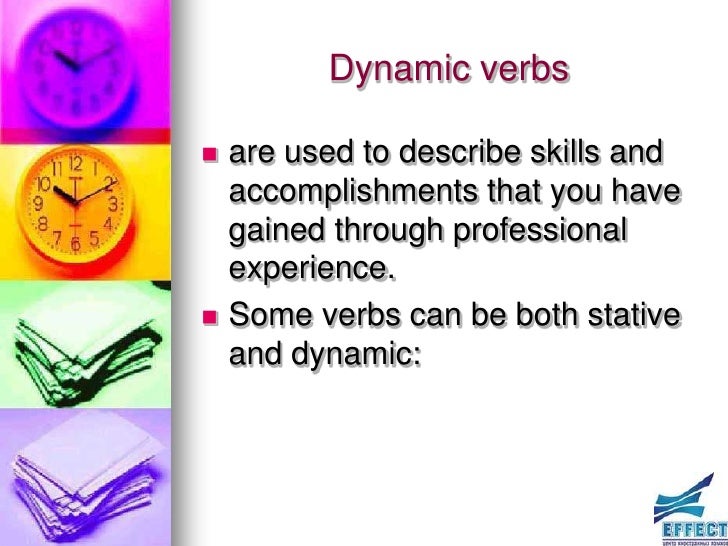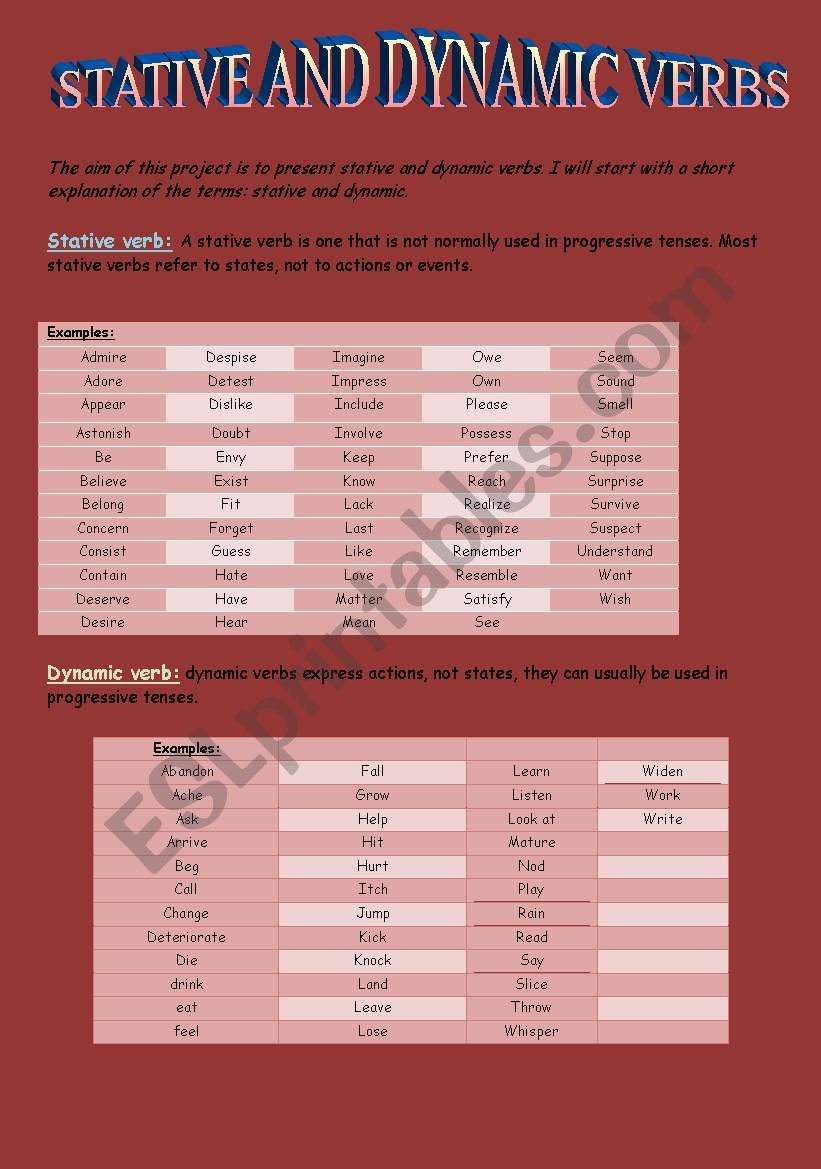Stative and Dynamic Verbs - Free download as Word Doc (.doc / .docx), PDF File (.pdf), Text File (.txt) or read online for free. Stative and Dynamic Verbs
Stative verbs | Dynamic verbs | Uses & differences | Types of verb English Grammar | Easy Teacher | #StativeVerbs#DynamicVerbs#EasyTeacher
1. 2. (1) The term is Active verb, not "dynamic"; own is stative, while rent is active, and stative verbs can't be used in the progressive, for instance: *I am owning that house, vs I.
Stative and Dynamic Verbs Introduction. Verbs in English can be classified into two categories: stative verbs and dynamic verbs. Dynamic verbs (sometimes referred to as "action verbs").
Use of state verbs. Not every verb can be used in a progressive form. We do not use verbs which express situations in these forms. But we often use verbs which express actions (dynamic.
Stative noughts and dynamic crosses. This is a free board game to practise/revise stative and dynamic verbs in an entertaining way. Students create sentences using stative and.
Typical stative verbs include: hate, love, seem, have, sound, doubt, prefer, understand, deserve, lack, The Importance of Stative Verbs. Looking at it as a simple way to divide verbs into two.
smell / taste. Stative: the quality of smell or taste possessed by something. The bar smells of smoke. This meat tastes like chicken. Action: when a person uses their nose or mouth to test.
Divide The Verbs Into Stative And Dynamic. In contrast, dynamic verbs are used to describe actions or processes. The progressive forms occur only with dynamic verbs, that is,.
10. taste (also taste (stative) = smell, feel, has a certain taste: look) This soup tastes great. taste (dynamic) = the action of tasting: The chef is tasting the soup. 11. think think.
A good way to tell the difference between stative and dynamic verbs is seeing if there is a clear start and finish to the activity of the verb. Dynamic verbs tend to have a clear.
Verbs in English can be classified into two categories: stative verbs and dynamic verbs. Dynamic verbs (sometimes referred to as "action verbs") usually describe actions we can take, or things.
smell. sound. Let's look at some examples of how these verbs are used differently. Example sentences: "I think it is wrong to hit children." Here, think is a stative verb. It means "to have an.
We need stative verbs to express our attitude, opinion, feelings, senses, ownership and so on. It is important to remember that we don't put stative verbs into continuous tenses. It means we.
The progressive forms occur only with dynamic verbs, that is, with verbs that show qualities capable of change as opposed to stative verbs, which show qualities not capable of change.*.
Some verbs can be both stative and dynamic: Be. be is usually a stative verb, but when it is used in the continuous it means 'behaving' or 'acting'. you are stupid = it's part of your personality..
Quick Summary on Dynamic and Stative Verbs. Dynamic and stative verbs represent two opposite types of verbs; while dynamic verbs indicate physical action (like jump or play), stative verbs convey a state of being or condition (like prefer or have). The horse jumped over the.
Understanding what stative verbs are will help learners of English use simple and continuous tenses more accurately. We can divide English verbs into two categories: stative.
The Nature of Writing is a Youtube channel and website (https://natureofwriting.com/) dedicated to the teaching of English literature and writing. We provide...
Taste. taste (stative) = has a certain taste. This soup tastes great. The coffee tastes really bitter. taste (dynamic) = the action of tasting. The chef is tasting the soup. (‘taste’.
In this article we will learn about Stative and Dynamic Verbs with the help of examples - The barrister was examining the case. ... Dynamic verbs can further be divided in.
Stative Verbs. Stative verbs are verbs that express a state rather than an action. They usually relate to thoughts, emotions, relationships, senses, states of being and.
Stative verbs are used to describe situations that do not change or where there is no action. In contrast, dynamic verbs are used to describe actions or processes. This is similar.
2. M.ED. PAOLA FORERO STATIVE AND DYNAMIC VERBS Verbs in English can be classified into two categories: stative verbs and dynamic verbs. Dynamic verbs (sometimes referred to.
Verbs in English can be classified into two categories: stative and dynamic verbs. Dynamic verbs (sometimes referred to as "action verbs") usually describe actions we can take, or things that.
Pengertian Stative Verb (Non Action Verb) Yang kita bahas pertama dalam ‘pertandingan antara stative verb vs dynamic verb’ kali ini adalah Stative Verb. Stative Verb.
Divide The Verbs Into Stative And Dynamic. Drive, watch, listen some verbs which are normally stative verbs can become dynamic verbs with some change in. Dynamic verbs.
Stative and dynamic verbs are two types of English verbs. This lesson shows you the difference between stative and dynamic verbs. You can find tests at the bottom of the page when you are.


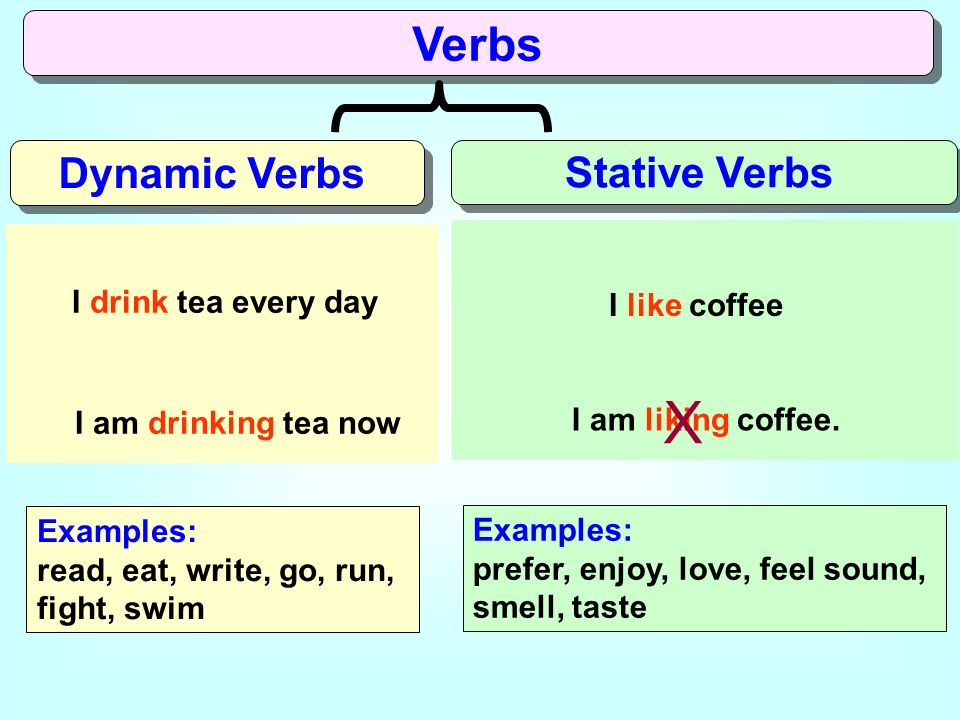
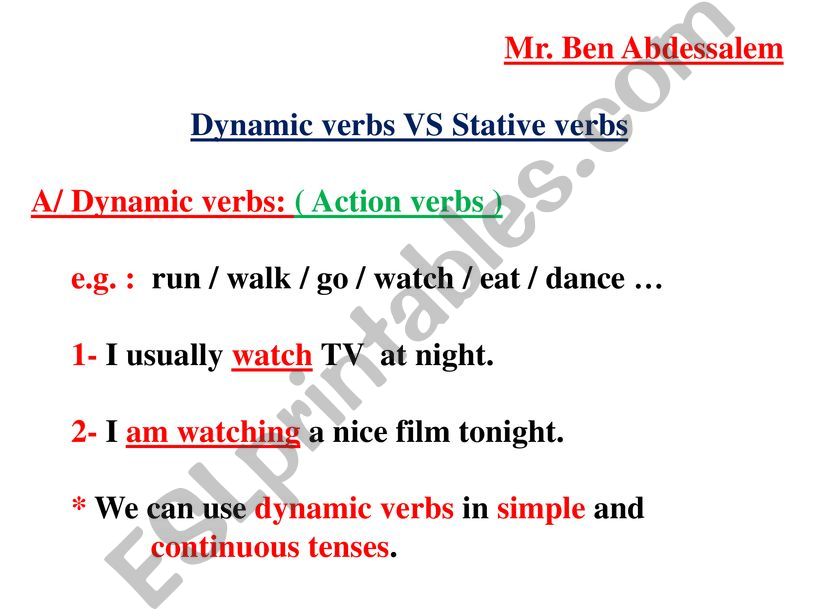

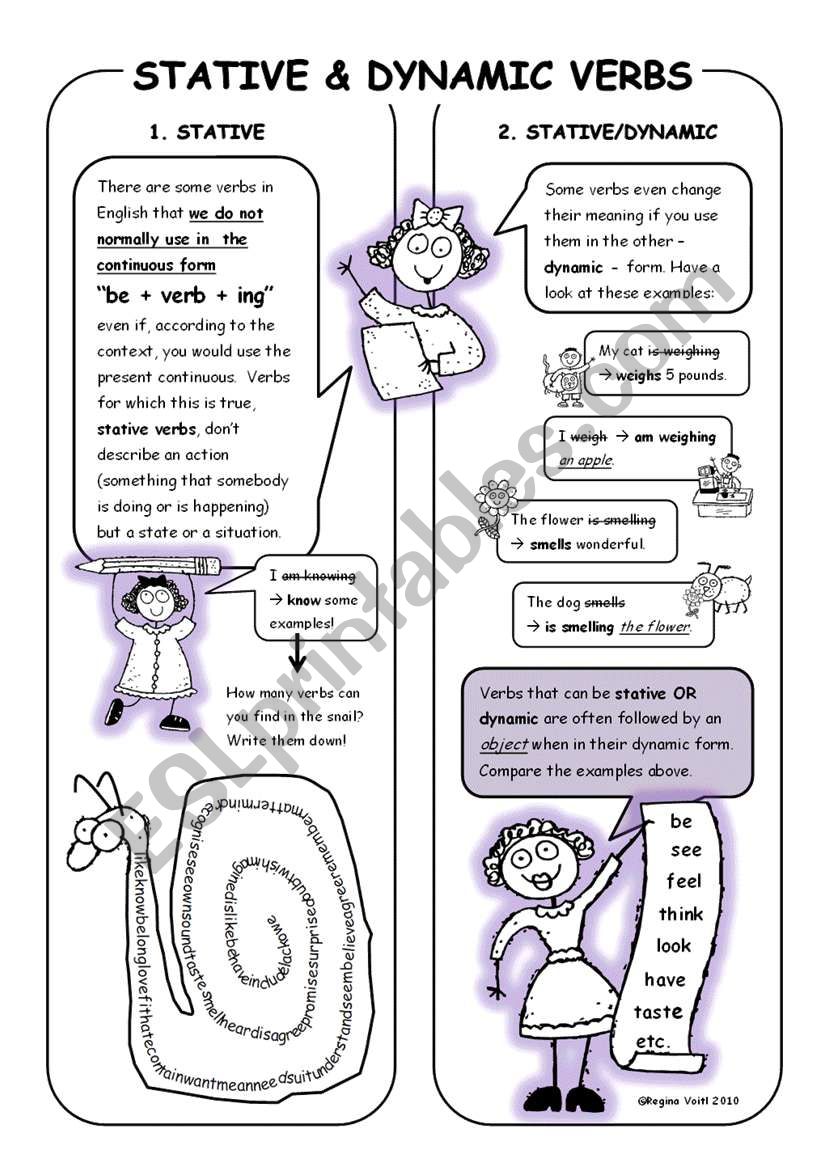
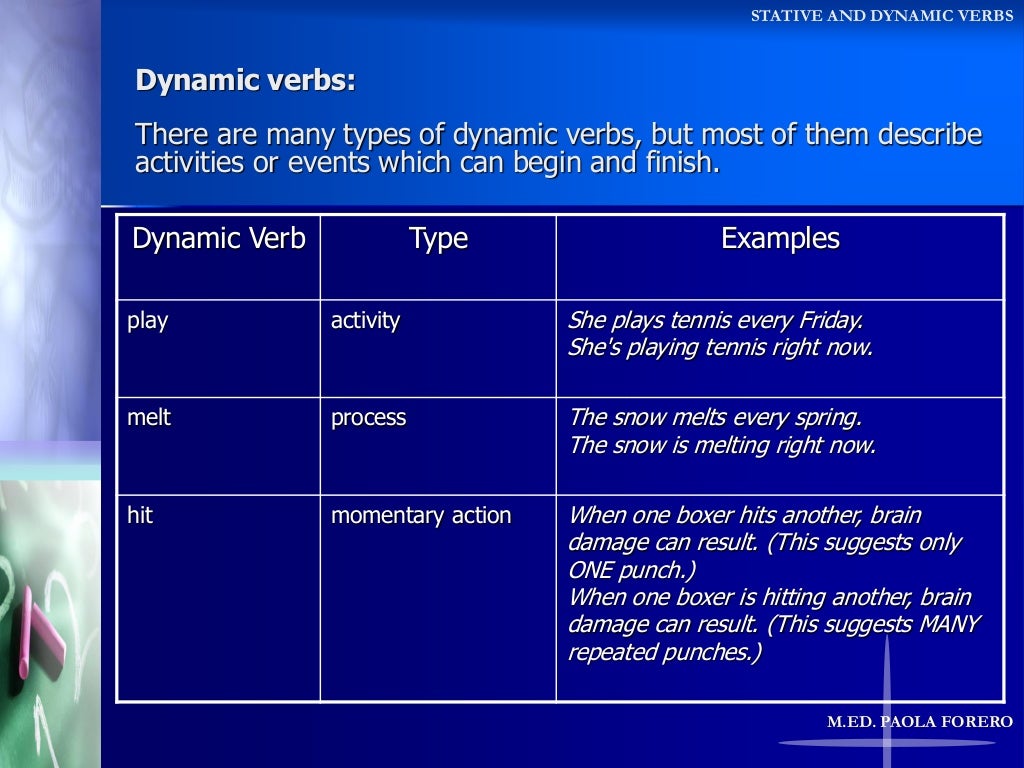


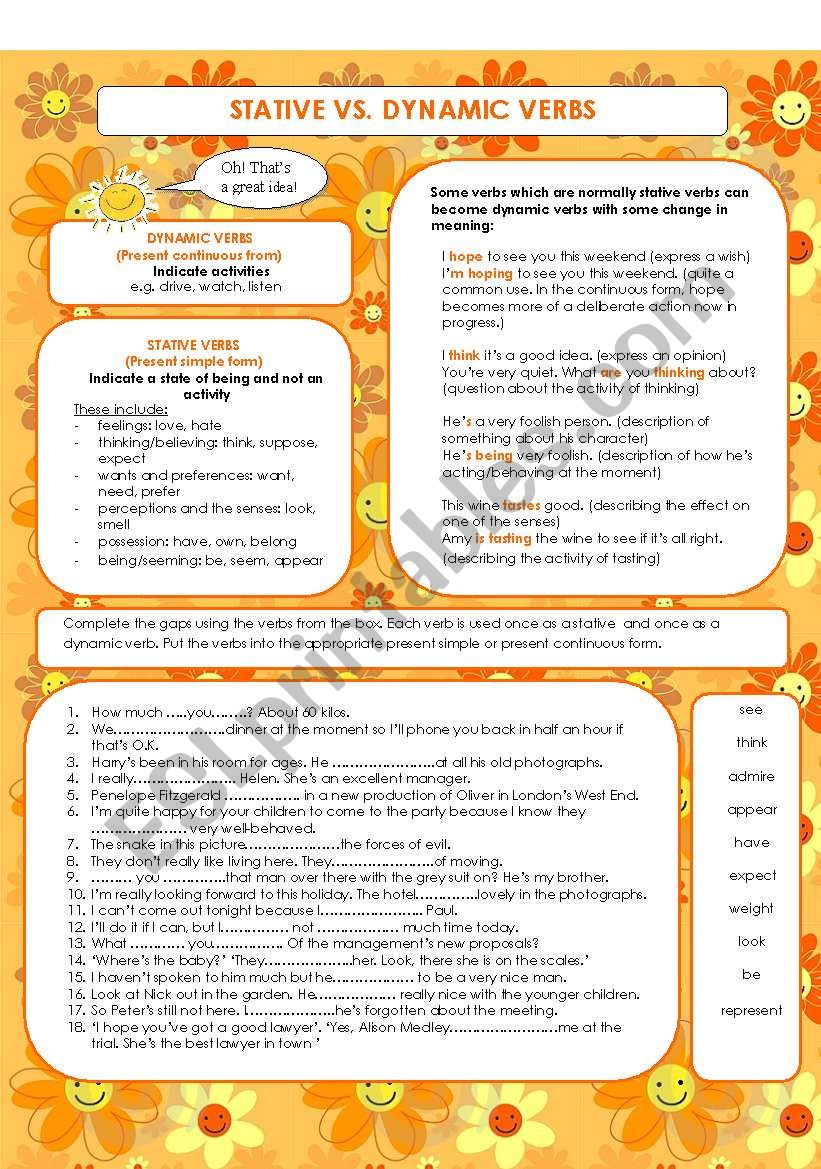




![Divide The Verbs Into Stative And Dynamic Dynamic & stative verbs with EX. + answers - [PDF Document]](https://static.documents.pub/img/1200x630/reader024/reader/2021010107/5442a700b1af9f310a8b4701/r-1.jpg?t=1612473240)
